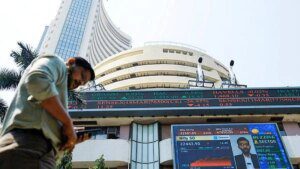India appears to be entering a long-awaited phase of earnings upgrades, buoyed by strong corporate results, increased festive demand, supportive policy measures, and an improving economic backdrop, according to a recent report by PL Capital.
Following five consecutive quarters of downward earnings revisions, estimates for Nifty earnings have turned positive. Upgrades of 0.7 percent for FY26, 0.9 percent for FY27, and 1.3 percent for FY28 indicate a significant shift in market sentiment and suggest that corporate recovery is gathering momentum.
The Nifty Index has risen 4 percent over the past three months, breaking free from a prolonged consolidation phase. PL Capital attributes this shift to stronger-than-expected corporate earnings for the second quarter, enhancing prospects of resolving tariff disputes with the United States, and a notable resurgence in domestic consumption during the festive and wedding seasons. The Goods and Services Tax (GST) rate rationalization implemented in September 2025, which reduced effective tax rates and lowered retail prices by 5 to 10 percent across key consumer categories, has also significantly boosted spending in urban and rural markets.
Valuations appear constructive, with PL Capital using a 15-year average price-to-earnings ratio of 19.2 times and a September 2027 earnings per share estimate of 1,515. The firm projects the Nifty’s 12-month target at 29,094, with a bullish estimate of 30,548 and a bearish estimate of 26,184.
The report expresses a preference for sectors including banks, healthcare, consumer goods, automobiles, and defense, while remaining underweight in IT services, commodities, and oil and gas.
In Q2 FY26, corporate performance across the coverage universe exceeded expectations, with sales growth of 8.1 percent, EBITDA growth of 16.3 percent, and profit after tax (PAT) growth of 16.4 percent. Both EBITDA and PAT surpassed estimates, marking the first upgrade in Nifty EPS since August 2024.
Sectoral performance highlighted notable gains in hospitals, capital goods, cement, electronic manufacturing services (EMS), ports, non-banking financial companies (NBFCs), and telecom, while commodity-linked sectors such as metals and oil and gas saw profit expansions ranging from 33 to 58 percent.
On the fiscal front, government capital expenditure, a key driver of economic momentum in recent years, has already reached 52 percent of the FY26 target, compared to 41 percent during the same period last year. However, PL Capital cautions that the second half of the fiscal year may experience moderation due to potential budget pressures from GST rationalization, increased fertilizer subsidies, and subdued direct tax collections. Despite this, domestic demand appears better equipped to sustain economic momentum, supported by tax reductions, a 100-basis-point cut in interest rates, a normal monsoon, and inflation at a 12-year low.
In terms of the festive season, Diwali 2025 marked one of the strongest on record. Gold and silver purchases surged to an estimated ₹0.7–1 trillion, spurred by high demand for coins, bars, and lightweight jewelry. The reduction in GST on small cars from 28 percent to 18 percent in September 2025 significantly boosted passenger vehicle demand, leading to a rise in sales to 5.49 lakh units that month. Tata Motors alone sold over 100,000 units during the Navratri–Diwali period, reflecting a 33 percent annual growth. Sales of two-wheelers and tractors also strengthened due to improved rural incomes and renewed festive enthusiasm.
Digital payments soared to unprecedented levels during the festive season. Despite ongoing global uncertainties, including the impact of 50 percent US tariffs on select Indian products, India’s merchandise and services sectors have shown remarkable resilience. While merchandise exports declined 12 percent year-on-year in October, the drop in shipments to the US was partially offset by strong growth in markets such as the UAE and Vietnam. Services exports, particularly in IT, digital services, and professional consulting, rose 12 percent year-on-year in October, reaching a new monthly record of $38.5 billion.
The expansion of Global Capability Centers (GCCs), aided by tighter US H-1B visa restrictions, has additionally reinforced India’s services export landscape, as noted in the report.
While global uncertainties persist, PL Capital concluded that India’s domestic economic environment is strengthening at an unprecedented pace. With positive earnings revisions, accelerating consumer demand, and resilient macroeconomic indicators, the country stands on the brink of a new phase of growth and profitability. Market valuations remain close to long-term averages, providing a stable foundation for the next phase of equity market performance. With policy support aligned with corporate vitality and household optimism, India’s economic trajectory appears well-positioned for sustained expansion through FY27 and beyond.
Published on November 26, 2025.










